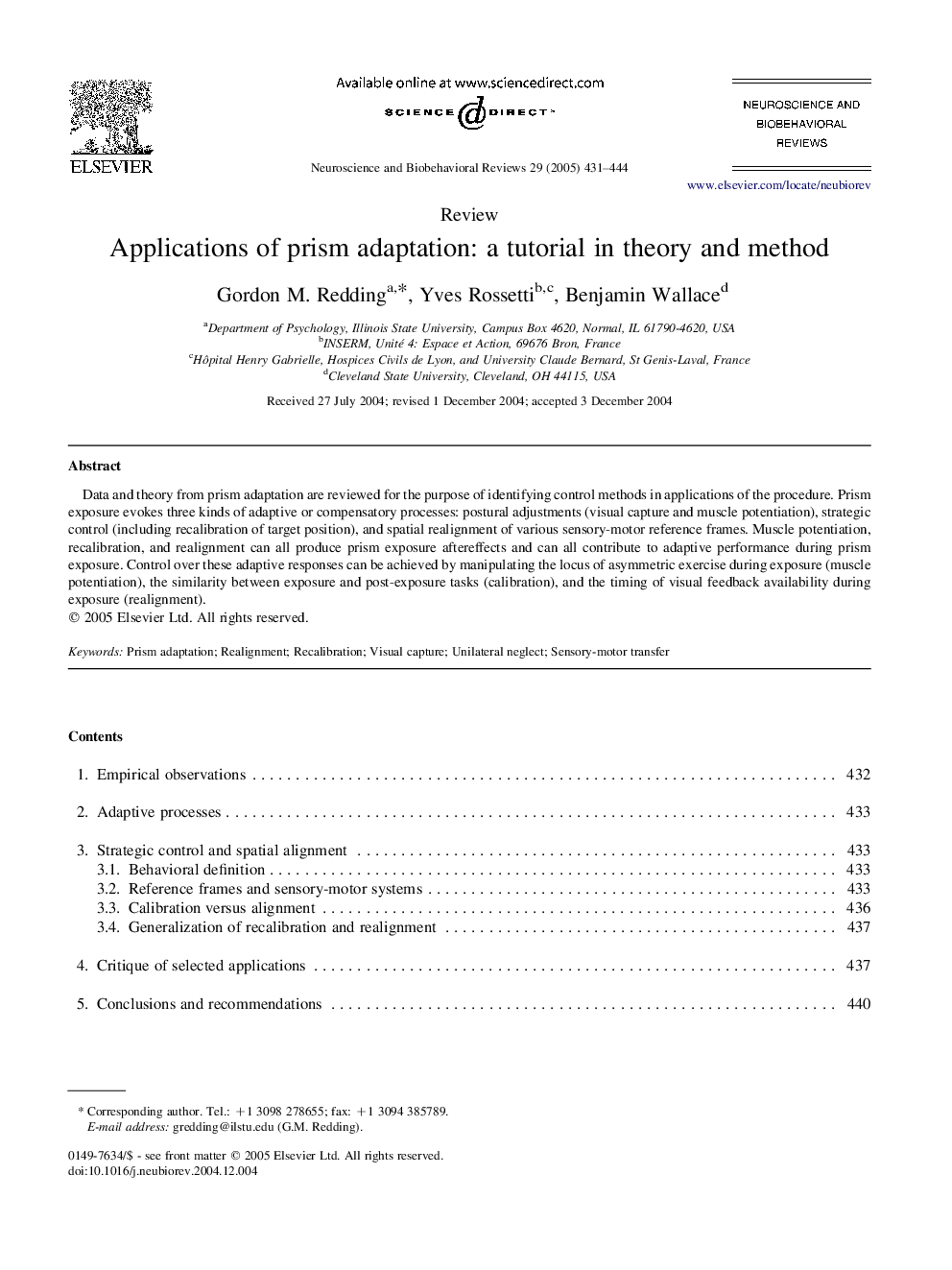| Article ID | Journal | Published Year | Pages | File Type |
|---|---|---|---|---|
| 10461929 | Neuroscience & Biobehavioral Reviews | 2005 | 14 Pages |
Abstract
Data and theory from prism adaptation are reviewed for the purpose of identifying control methods in applications of the procedure. Prism exposure evokes three kinds of adaptive or compensatory processes: postural adjustments (visual capture and muscle potentiation), strategic control (including recalibration of target position), and spatial realignment of various sensory-motor reference frames. Muscle potentiation, recalibration, and realignment can all produce prism exposure aftereffects and can all contribute to adaptive performance during prism exposure. Control over these adaptive responses can be achieved by manipulating the locus of asymmetric exercise during exposure (muscle potentiation), the similarity between exposure and post-exposure tasks (calibration), and the timing of visual feedback availability during exposure (realignment).
Related Topics
Life Sciences
Neuroscience
Behavioral Neuroscience
Authors
Gordon M. Redding, Yves Rossetti, Benjamin Wallace,
